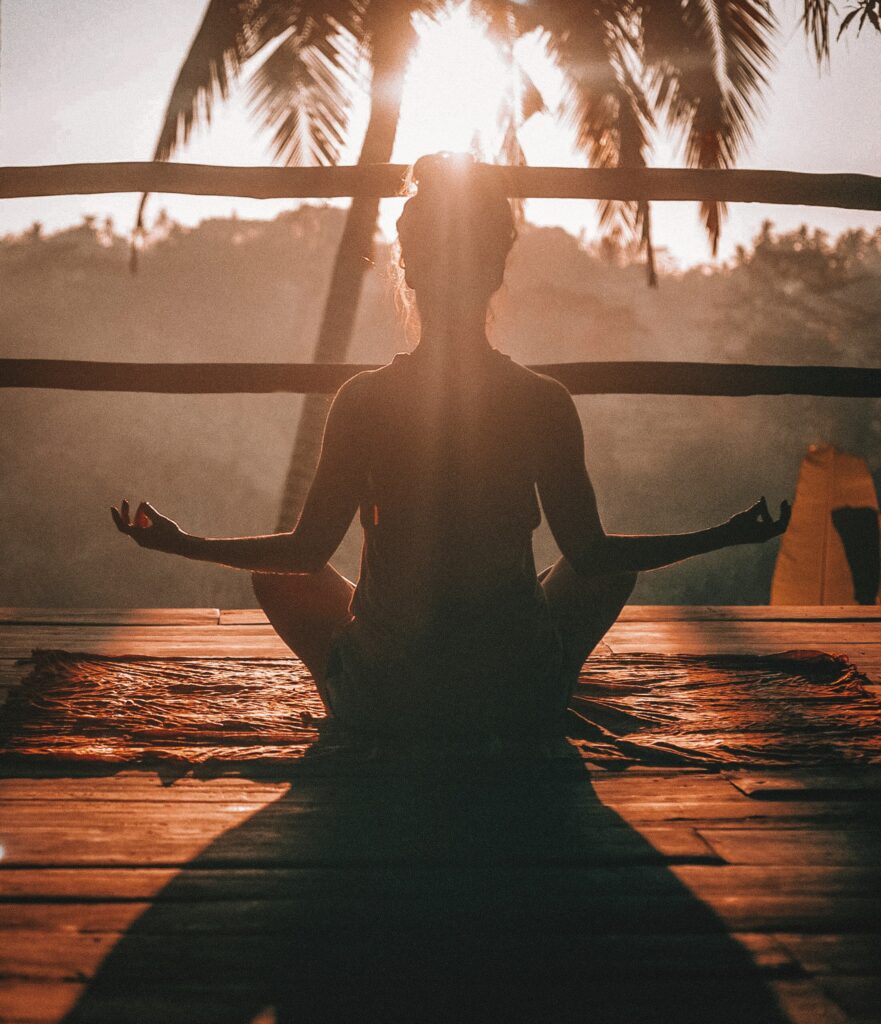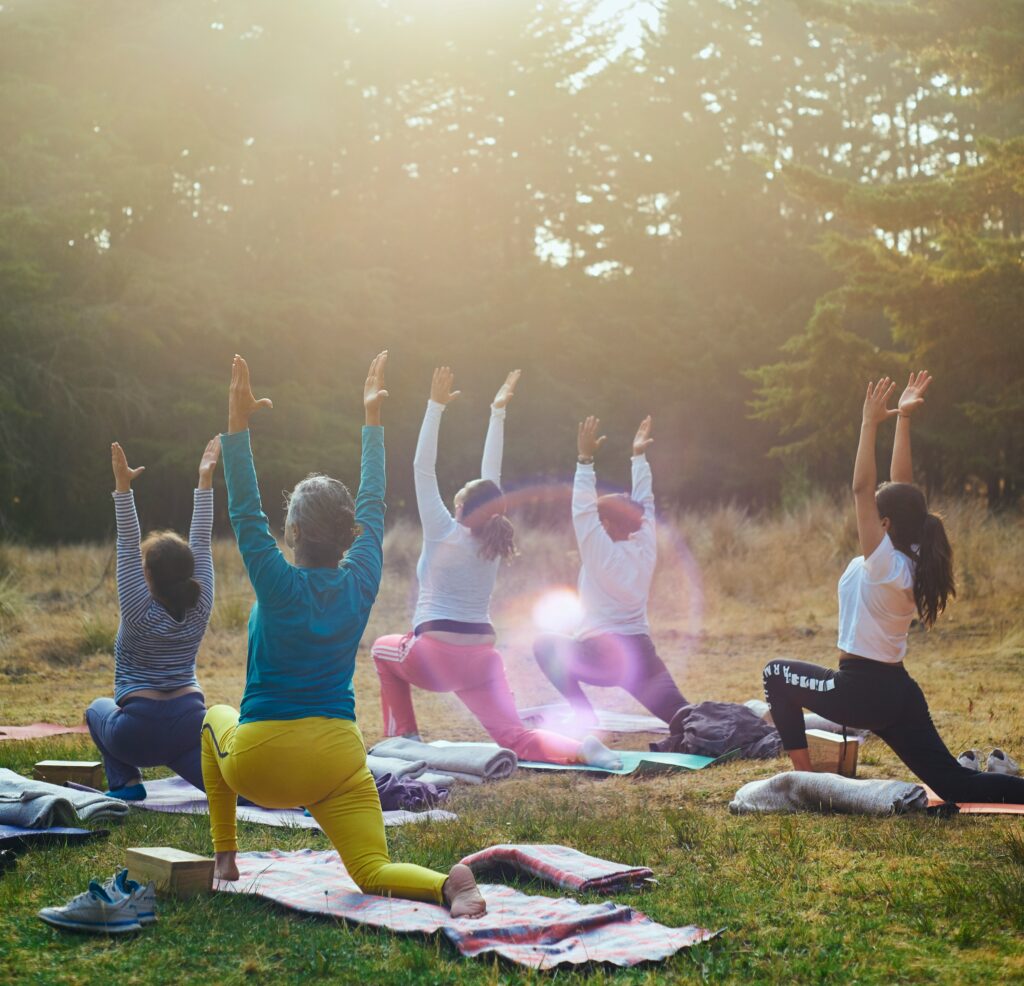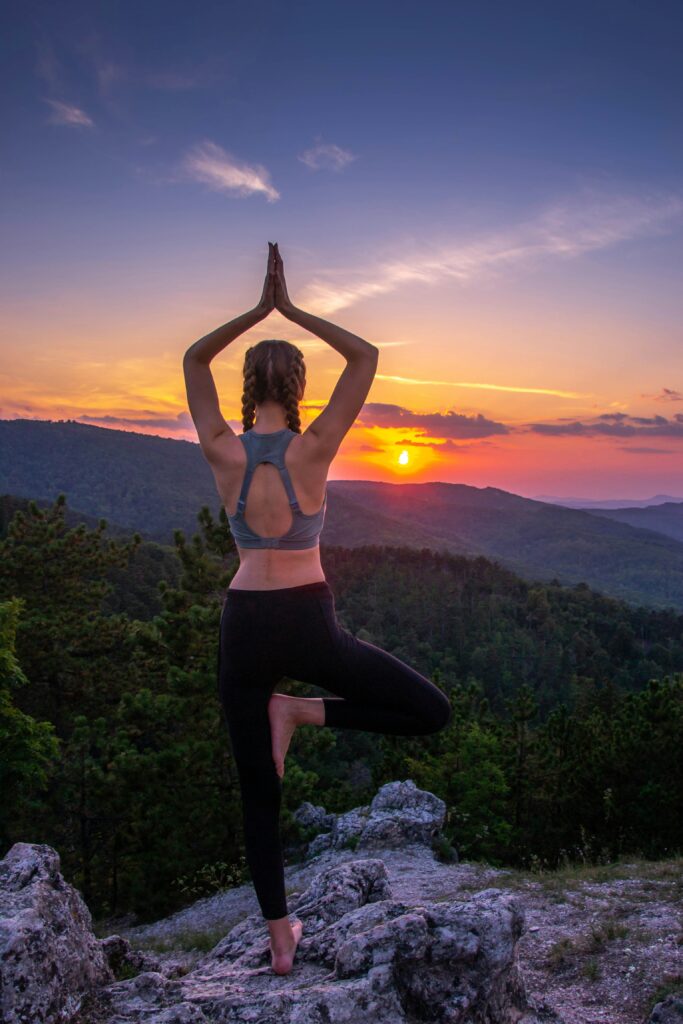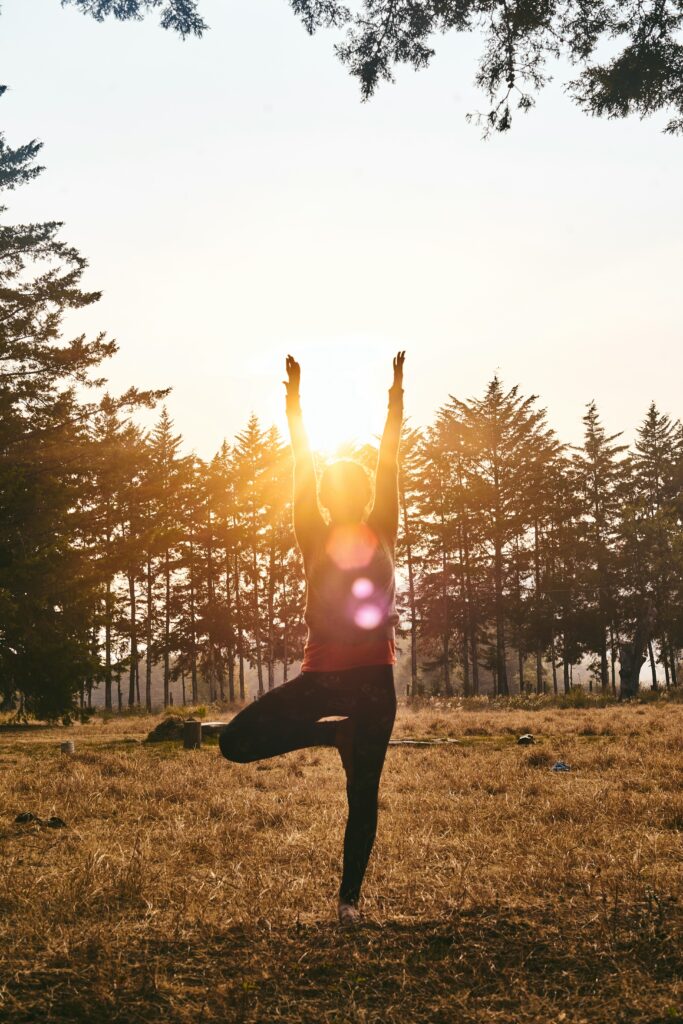Embarking on a Journey of Serenity: A Beginner’s Guide to Starting a Yoga Routine

Initiating a yoga journey is not just about physical postures, it’s a sacred exploration of your inner self and a connection to the Earth. In today’s fast-paced world, finding moments of tranquility and self-care is essential for maintaining overall well-being. Whether you’re looking to improve flexibility, reduce stress, or enhance your physical fitness, starting a yoga routine can be a transformative experience. Together we will explore this ancient practice with the hope that you will find empowerment.
Cultivate Grounding Intentions:
Taking the first step towards positive change requires courage and a willingness to embrace new possibilities. Once you’ve taken that brave step, the journey involves building confidence and self-belief. It’s about committing to a transformative path that nurtures not only the physical aspects of your well-being but also feeds your soul with enriching experiences and growth. We suggest starting by incorporating Earth-inspired elements into your practice.

Begin your yoga journey by setting intentions that resonate with grounding and connection. These intentions should reflect your desire to establish a deeper connection with yourself and explore the potential for inner growth. Examples include “I am present in the moment”, I am strong”, “I am grateful”. This intention-setting process will act as the foundation for your practice, aligning your energy with the grounding principles of yoga.
Keep it simple when you start, incorporate poses that draw inspiration from the Earth’s elements. Tree Pose, Mountain Pose, and Child’s Pose evoke a sense of rootedness, balance, and surrender. These postures not only strengthen your physical connection to the Earth but also invite introspection and mindfulness. You will feel the Earth beneath you, fostering a sense of stability and rootedness.
Give Yourself Grace:
Don’t worry about correctly aligning yourself to poses, that will come with time. Focus on yourself, listen to your body, your mind, and the environment around you. Create a physical connection with the Earth, enhancing the grounding aspect of your practice, creating a sacred space for self-discovery. As you grow in your practice you will become stronger and be able to transition to different poses with ease. But when you first start, it’s ok if you fall. Just get back up and try again. EVERYONE FALLS.

Relax the Mind, and Explore the Soul:
Get lost in the essence of tranquility. Practice diaphragmatic breathing (belly breathing) allowing the breath to flow naturally and rhythmically. Once you find a comfortable rhythm, start taking deeper breaths, with longer exhales Start to converge your intake of breath, with physical movement of your body within a pose. As you exhale release, the pose as well as shedding the illusions created by modern society. The breath is a central component of yoga, serving as a bridge between the body and mind. This mindful breathwork not only enhances your physical practice but also invites a sense of inner peace and presence.
If you find your mind beginning to wander, focus on your breathing. Let yourself experience your inner mind’s eye and feel your emotions. There is nothing more therapeutic than using a strong emotion alongside a deep stretch – both the emotion and the tightness of your muscles pulling into a crescendo – only to be released with your exhale and the loosening of those strained muscles. Let the emotion go with your breath and allow yourself to transition into a new pose and mind frame is cathartic, this is why monks practice this ritual.
Essential Elements:
The best thing about yoga is that you can practice anywhere. Find a place you feel relaxed. It can be your basement, backyard, yoga studio or even your local park. This place should make you feel safe and secure.
It takes time before the practice is cultivated into a spiritual one, but with every practice, you will find yourself sinking deeper and deeper into serenity. Just remember to give yourself grace, and proceed forward with a pace you are most comfortable.
Next you will need a mat- especially if you are outside. A mat can be anything, a blanket, cardboard, or even the standard foam mat. If you prefer not to use a mat that is completely, okay as well. And a water bottle. Hydration is important especially if practicing outdoors in hot and humid weather.
There- that is all you need to get started! A familiar place, a mat of sorts, and a water bottle. As your practice grows you can add elements such as blocks, straps, journaling, music, and resistance bands. For now, just focus on you.

You can start your practice using a book, an app, or a class led by an instructor. We recommend a class to help you learn breathing techniques, as well as basic poses. If you join a class, don’t let yourself feel pressured, if you do not know how to do a move, or just need a break – just take a seat on your mat. This lets the instructor know, that you have hit a barrier, and would like a little extra help or need a small break. Depending on class size, the instructor may not get to you at that moment during that pose, but we promise – the same pose will come around again in the class, and the instructor be there for extra guidance.
Whether you’re looking to improve flexibility, reduce stress, or enhance your physical fitness, starting a yoga routine can be a transformative experience. Starting a yoga journey does not need to be a complex. Start simple, give yourself grace, and be open to yourself and what is around you. Keeping it simple and focusing on mastering one element at a time will help you in this lifelong practice.
If you are looking to kickstart your yoga practice, consider joining us for a class. Our class schedule is listed below.
